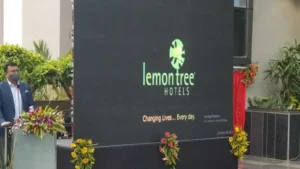The Open Network for Digital Commerce (ONDC) has revised its incentive program structure to give buyer-side apps more flexibility in how they offer discounts to consumers, halving the average subsidy launched in the food category and planned to increase the density of online retailers in 45 non-metropolitan counties.
Notice of the fifth version of the incentive program was sent to network participants (NP) last night (September 4) and will take effect from today. Moneycontrol reviewed a copy of the circular.
Change
Although the latest incentive structure increases the maximum amount that buyer side applications can claim from Rs 25 lakh per week to Rs 40 lakh per week and removes tracking of discounts for a particular order , but it also announced some changes to the average discount rate. are provided to users in different categories.
For example, the average offer has been reduced to Rs 50 per order for order values over Rs 200 in the F&B category and has remained at Rs 100 per order for order values over Rs 200 for goods. grocery, beauty and personal care, Rs 100. per order for an order value of Rs 200 to Rs 1,000 for electronics and more. In the previous version of the program, there was no category-based distinction in terms of the maximum offer per order, and the quantity was fixed at a flat fee of Rs 100.
More importantly, the number of deals a buyer can get the offer per week has been capped at 2 from 5 previously.
Admittedly, ONDC capped the offer per order at Rs 100 in June after being criticized for trying to gain market share through steep discounts on the food and beverage category. The government-backed e-commerce network has also adopted a tiered approach to merchant-side app incentives: for example, platforms will receive up to Rs 6,000 for each referral sold in Metros, up to Rs 7,500 in urban. focus on tier 2, -3 cities and Rs 5,000 in all other cities when the number of storage units is above 5,000 in the grocery category.
These incentives will also vary based on the number of SKUs in-app merchants have and the categories they participate in. “There are no local merchants outside of 400 cities, but we see users placing orders in 620 cities. We didn’t even do any promotion to promote it beyond some cities like Bengaluru, Meerut and Delhi. But as people become more aware through social media and seller efforts, we are seeing a gradual increase in the number of consumers testing ONDC,” said T Koshy, CEO. and ONDC CEO, told Moneycontrol last month.
“As we adjust our vision for the possible incentive program this week, we will prioritize a number of small towns, artisans, agricultural production organizations, and more,” he said at the time. ” While ONDC is betting on small Indian towns, they are also eyeing international markets. Moneycontrol reported in July that the network plans to test B2B shopping in geographies like Dubai and Singapore in September-October.
To do this, he has also set up an initiative whereby small sellers in India will receive a quality badge from an international rating company to gain the trust of their buyers. . stranger. Disorders
It also plans to launch financial services products such as online credit and insurance. At a recent event in Delhi, ONDC said a working committee made up of representatives from the Reserve Bank of India is finalizing disbursement terms for online financial products. Backed by the government, ONDC seeks to prevent the dominance of some major platforms, such as Amazon, Flipkart, Swiggy and Zomato, in e-commerce and food delivery. The government hopes to increase the national e-commerce penetration rate by 25% in the next two years, reaching 900 million buyers and 1.2 million sellers through the network. It is expected to generate a total merchandise value of $48 billion. ONDC relies on three key pillars to reduce the cost of doing business for everyone, including retailers: flexible pricing, inventory management, and delivery cost optimization.





